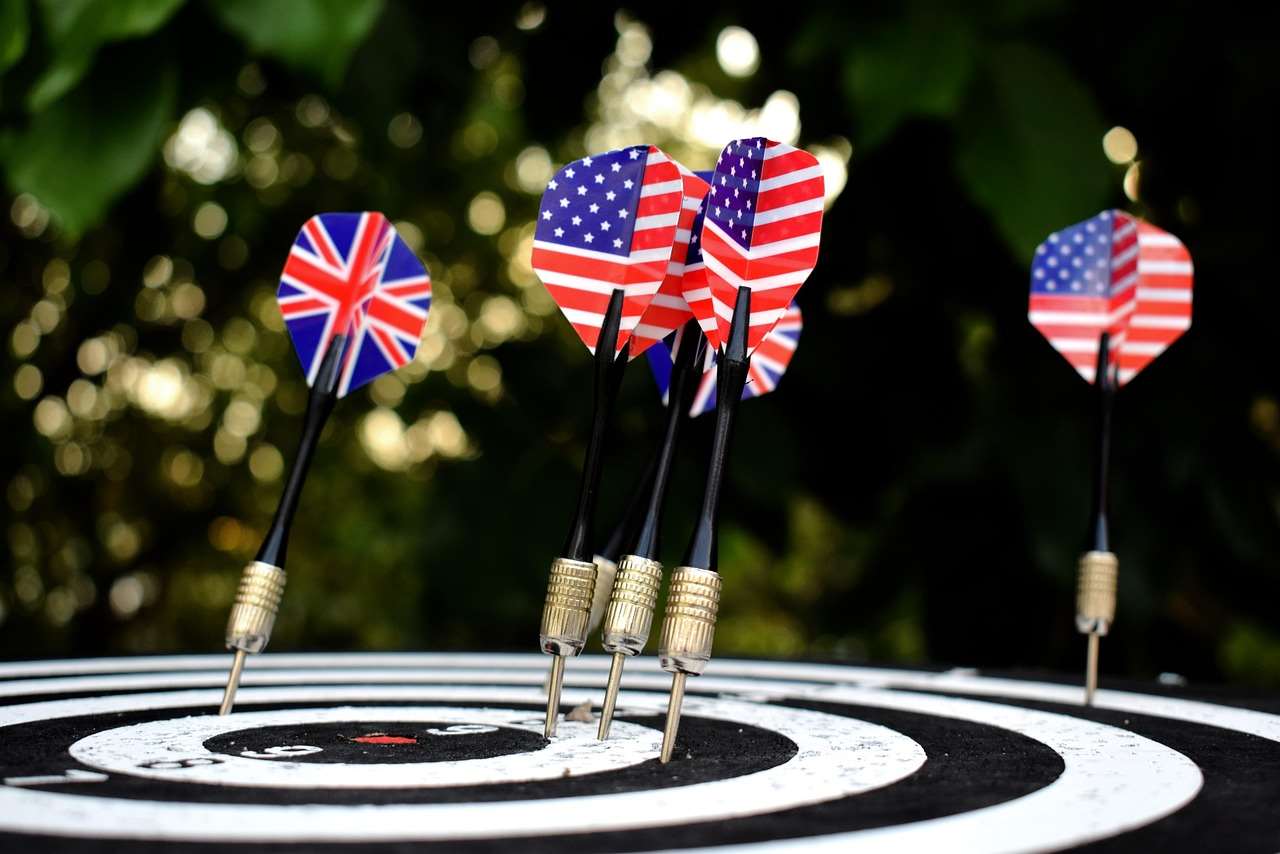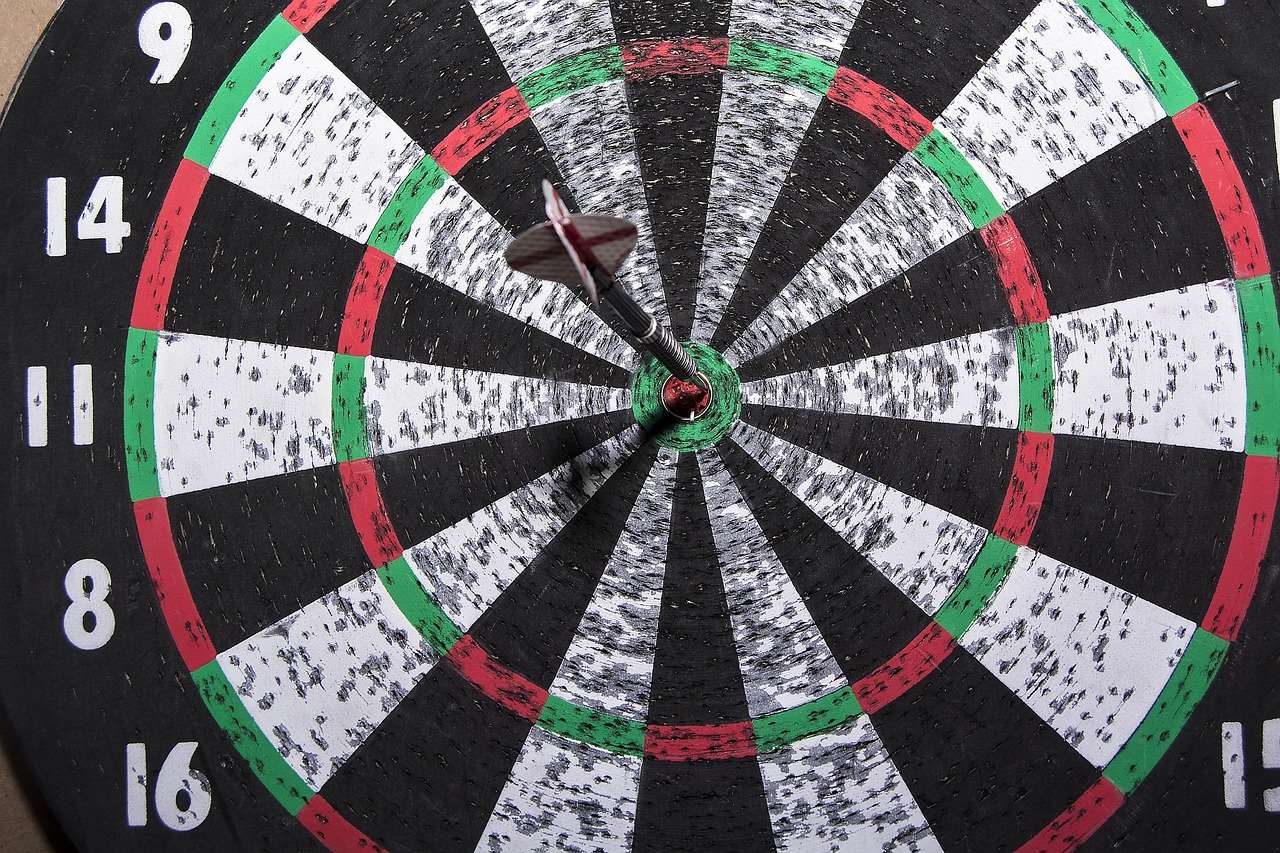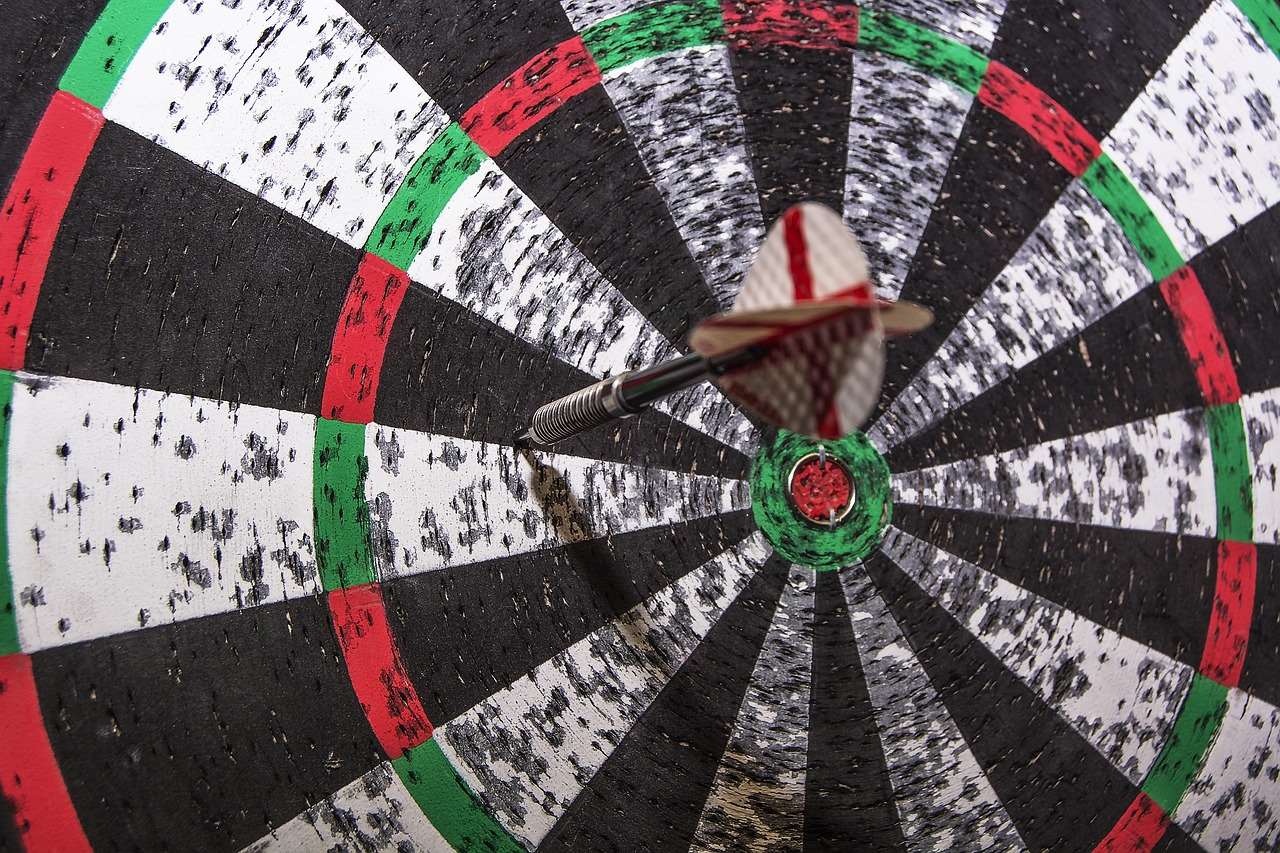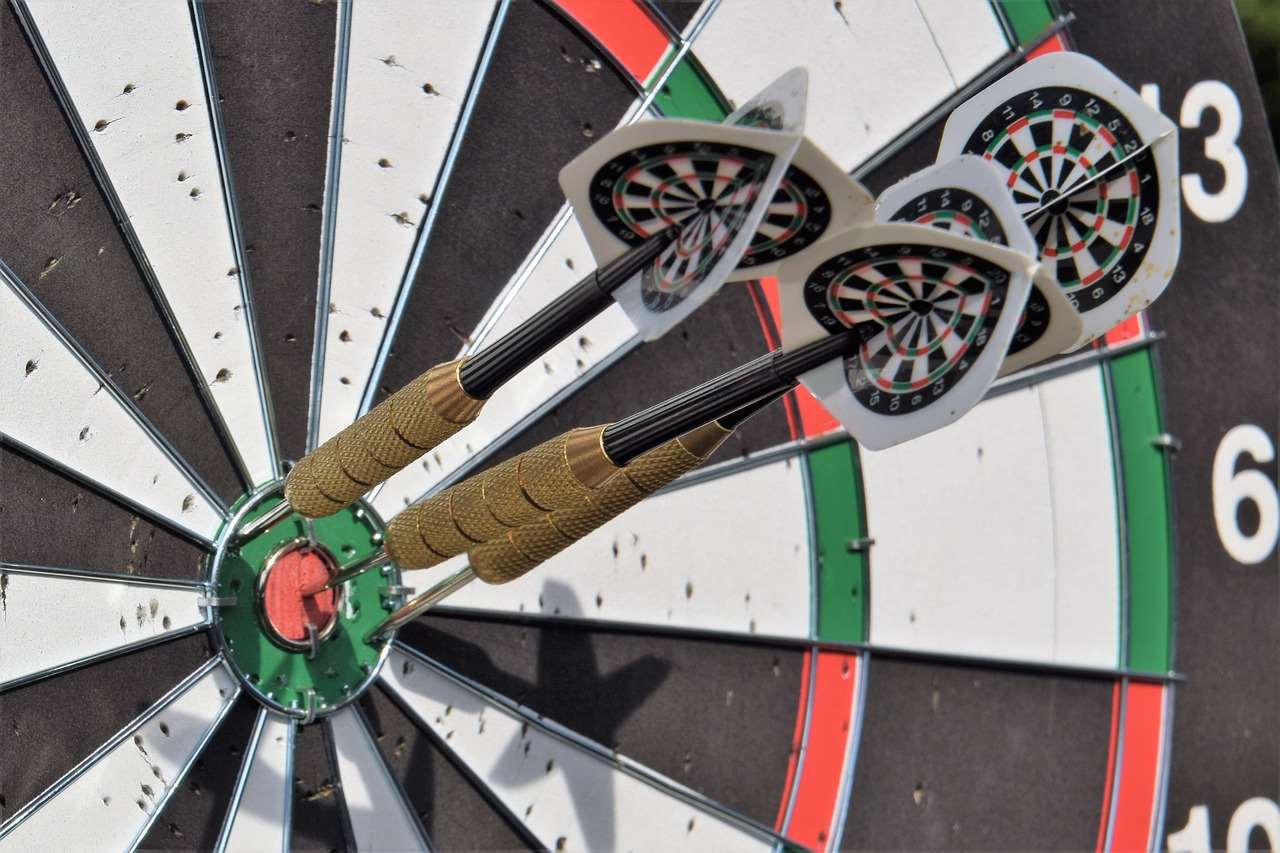Understanding darts RMSE (Root Mean Squared Error) is crucial for analyzing the accuracy of your dart throws. This article will explain what darts RMSE is, how to calculate it, and how you can use it to improve your game. We’ll also cover related topics to help you become a more skilled and analytical player.
⚠️ Still Using Pen & Paper (or a Chalkboard)?! ⚠️
Step into the future! The Dart Counter App handles all the scoring, suggests checkouts, and tracks your stats automatically. It's easier than you think!
Try the Smart Dart Counter App FREE!Ready for an upgrade? Click above!
Before diving into the specifics of darts RMSE, let’s establish a clear understanding of what it represents. Essentially, it’s a statistical measure that quantifies the average distance between your thrown darts and the bullseye. A lower RMSE indicates greater accuracy and consistency in your throws. This metric helps identify areas where your aim needs improvement or reveals the consistency of your throws over multiple sets.
Understanding Darts RMSE: A Deeper Dive
Calculating darts RMSE involves several steps. First, you need to record the coordinates (x, y) of each dart throw relative to the bullseye. This requires a method for accurately measuring the distance of each throw from the center. You can use a dartboard with a grid or specialized software for this task. Once you have these coordinates, you can calculate the Euclidean distance for each dart throw, which is simply the square root of the sum of the squares of the x and y differences from the bullseye. After you have all the distances, you square each distance, find the average of these squared distances and finally take the square root of this average. This is your darts RMSE.

Why is darts RMSE a more useful metric than simply averaging the distances? Because it weighs larger errors more heavily. A single drastically off-target throw will significantly impact the RMSE, highlighting inconsistencies in your game that a simple average might obscure. This is invaluable for identifying and addressing areas for improvement in your technique.
Practical Applications of Darts RMSE
Beyond simply understanding the number, darts RMSE has practical applications for improving your dart game. You can use it to track your progress over time, compare different throwing styles or even different darts. By consistently recording your darts RMSE, you can see if your training is actually improving your accuracy. A decreasing RMSE shows you’re making progress. If it remains flat or increases, you may need to adjust your training regimen or consider factors like your equipment or throwing style. For example, you could test the accuracy of different dart flights, weights and shafts, which may significantly affect your average error.

Consider this scenario: You’ve been practicing your darts RMSE over several weeks, meticulously recording your data. You notice a consistent pattern of misses to the left. This insight, derived from your RMSE calculations, allows you to focus your practice on correcting this specific issue, rather than just practicing generically. This targeted approach will yield faster and more effective results.
Factors Influencing Darts RMSE
Several factors can influence your darts RMSE. These range from the obvious, such as your throwing technique and the quality of your darts, to subtler elements, such as the ambient environment (temperature, humidity) and even your mental state. Understanding these factors is key to minimizing your darts RMSE and improving your overall game.
Improving Your Throwing Technique
A consistent and effective throwing technique is paramount. Consider consulting experienced players or coaches for guidance on improving your grip, stance, and follow-through. Many resources are available online and offline to help you refine your technique. Remember, consistency is key to lowering your darts RMSE. Even minor adjustments in your technique can have a significant impact on your accuracy over time. Learning proper dart set programming can also contribute significantly to improved accuracy and lower darts RMSE.
Equipment Considerations
The quality and type of your darts also play a significant role. Experimenting with different weights, flights, and shafts can help you find the equipment that best suits your throwing style and contributes to lower darts RMSE. Finding the right darts and case can significantly impact consistency, improving accuracy and thus decreasing the RMSE.

Even seemingly minor aspects, such as the condition of your dartboard, can impact your results. A worn-out dartboard with damaged segments will inevitably lead to an increase in your darts RMSE. This is where a proper Target Swiss Point darts review may also prove helpful in narrowing down suitable equipment options.
Advanced Techniques for Reducing Darts RMSE
Beyond fundamental technique and equipment, more advanced strategies can further refine your accuracy and reduce your darts RMSE. These include mental training, data analysis, and practicing specific aiming drills.
Mental Game and Focus
The mental aspect of darts often gets overlooked, but a calm and focused mindset is essential for consistent accuracy. Mental training techniques such as visualization and mindfulness can significantly improve your concentration and reduce the impact of pressure, thereby contributing to a lower darts RMSE.
Data Analysis and Visualization
Utilizing tools that track your throws can provide valuable insights. By meticulously recording and analyzing your throws, you can identify patterns and trends that contribute to a higher darts RMSE. Visualizing your throw data, perhaps using a scatter plot, helps identify recurring errors in your aim. The application of Mobile dart scorer allows you to precisely record and analyse the location of each throw and then calculate the RMSE with great ease.
Targeted Practice Drills
Instead of just throwing darts randomly, incorporate targeted drills into your practice regimen. Focus on specific aspects of your technique or aim that the data analysis reveals to be consistently weak. For example, if your data shows a consistent miss to the left, dedicate time to drills aimed at correcting that particular issue.

For example, practice aiming at specific segments of the board or performing drills that encourage better consistency. This targeted approach is far more efficient than generalized practice and allows for more rapid improvement, leading to a lower darts RMSE over time. By incorporating these advanced techniques alongside fundamental skill-building, one can significantly elevate their game and achieve a consistently lower RMSE.
Beyond the Numbers: Interpreting Darts RMSE
While the darts RMSE provides a quantifiable measure of accuracy, it’s important to interpret the results within the context of your overall performance. A low darts RMSE doesn’t automatically equate to championship-level play. Other factors, such as finishing ability and strategic decision-making, are equally important.
Remember, even with a low darts RMSE, you can still improve your game. Consistent practice, a focus on technique, and the use of data analysis will help you reach your full potential, regardless of your numerical score. The goal isn’t just to minimize the darts RMSE; it’s to use it as a tool to enhance your overall game.

Conclusion
In conclusion, understanding and utilizing darts RMSE provides a powerful tool for self-improvement in the game of darts. By understanding how to calculate and interpret this metric, you can pinpoint areas for improvement in your technique, equipment, and mental game. Remember to track your progress over time, and you’ll see significant improvements in your accuracy and overall performance. Don’t just focus on the number; use darts RMSE to guide your practice, refine your skills, and enjoy the journey to becoming a better darts player! Learning about possible checkouts will also help enhance your overall game.
Start tracking your darts RMSE today! See the difference that a data-driven approach can make to your game. What are you waiting for? Start practicing and watch your scores improve! Following the professional darts circuit can further enhance your learning and provide inspiration.
“`
Hi, I’m Dieter, and I created Dartcounter (Dartcounterapp.com). My motivation wasn’t being a darts expert – quite the opposite! When I first started playing, I loved the game but found keeping accurate scores and tracking stats difficult and distracting.
I figured I couldn’t be the only one struggling with this. So, I decided to build a solution: an easy-to-use application that everyone, no matter their experience level, could use to manage scoring effortlessly.
My goal for Dartcounter was simple: let the app handle the numbers – the scoring, the averages, the stats, even checkout suggestions – so players could focus purely on their throw and enjoying the game. It began as a way to solve my own beginner’s problem, and I’m thrilled it has grown into a helpful tool for the wider darts community.